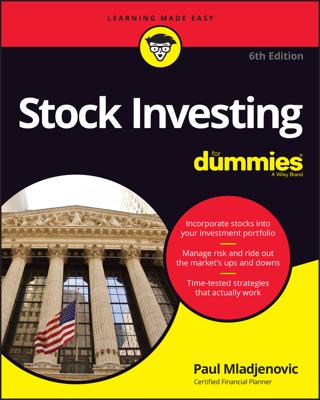Normally, when you hear the word “volume” on the news, it refers to how much stock investors bought and sold for the entire market. Volume is certainly important to watch because the stocks that you’re investing in are somewhere in that activity. For the “Vol” column, though, the volume refers to the individual stock.
| 52-Wk High | 52-Wk Low | Name (Symbol) | Div | Vol | Yld | P/E | Day Last | Net Chg |
|---|---|---|---|---|---|---|---|---|
| 21.50 | 8.00 | SkyHighCorp (SHC) | 3,143 | 76 | 21.25 | +.25 | ||
| 47.00 | 31.75 | LowDownInc (LDI) | 2.35 | 2,735 | 5.9 | 18 | 41.00 | –.50 |
| 25.00 | 21.00 | ValueNowInc (VNI) | 1.00 | 1,894 | 4.5 | 12 | 22.00 | +.10 |
| 83.00 | 33.00 | DoinBadlyCorp (DBC) | 7,601 | 33.50 | –.75 |
Volume tells you how many shares of that particular stock were traded that day. If only 100 shares are traded in a day, then the trading volume is 100. SHC had 3,143 shares change hands on the trading day represented.
Usually the business news media only mention volume for a particular stock when it’s unusually large. If a stock normally has volume in the 5,000 to 10,000 range and all of a sudden has a trading volume of 87,000, then it’s time to sit up and take notice.
Keep in mind that a low trading volume for one stock may be a high trading volume for another stock. You can’t necessarily compare one stock’s volume against that of any other company. The large cap stocks like IBM or Microsoft typically have trading volumes in the millions of shares almost every day, whereas less active, smaller stocks may have average trading volumes in far, far smaller numbers.
The main point to remember is that trading volume that is far in excess of that stock’s normal range is a sign that something is going on with that stock. It may be negative or positive, but something newsworthy is happening with that company. What are typical events that cause increased trading volume? Some positive reasons include the following:
Good earnings reports: The company announces good (or better-than-expected) earnings.
A new business deal: The firm announces a favorable business deal, such as a joint venture, or lands a big client.
A new product or service: The company’s research and development department creates a potentially profitable new product.
Indirect benefits: The business may benefit from a new development in the economy or from a new law passed by Congress.
Some negative reasons for an unusually large fluctuation in trading volume for a particular stock include the following:
Bad earnings reports: Profit is the lifeblood of a company. When its profits fall or disappear, you see more volume.
Governmental problems: The stock is being targeted by government action, such as a lawsuit or a Securities and Exchange Commission (SEC) probe.
Liability issues: The media report that the company has a defective product or similar problem.
Financial problems: Independent analysts report that the company’s financial health is deteriorating.
Check out what’s happening when you hear about heavier-than-usual volume (especially if you already own the stock).

